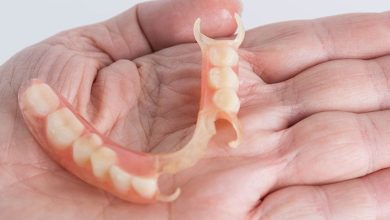Wilson Disease: Prevention And Cure


Wilson’s disease is a genetic disorder in which excess copper builds up in the body. Symptoms are typically related to the brain and liver. Liver-related symptoms include vomiting, weakness, fluid build up in the abdomen, swelling of the legs, yellowish skin and itchiness.
Table of Contents
Symptoms
Wilson’s disease is present at birth, but signs and symptoms don’t appear until the copper builds up in the brain, liver or other organ. Signs and symptoms vary depending on the parts of your body affected by the disease. They can include:
- Fatigue, lack of appetite or abdominal pain
- A yellowing of the skin and the whites of the eye (jaundice)
- Golden-brown eye discoloration (Kayser-Fleischer rings)
- Fluid buildup in the legs or abdomen
- Problems with speech, swallowing or physical coordination
- Uncontrolled movements or muscle stiffness
Complications
Untreated, Wilson’s disease can be fatal. Serious complications include:
- Scarring of the liver (cirrhosis). As liver cells try to make repairs to damage done by excess copper, scar tissue forms in the liver, making it more difficult for the liver to function.
- Liver failure. This can occur suddenly (acute liver failure), or it can develop slowly over years. A liver transplant might be a treatment option.
- Persistent neurological problems. Tremors, involuntary muscle movements, clumsy gait and speech difficulties usually improve with treatment for Wilson’s disease. However, some people have persistent neurological difficulty despite treatment.
- Kidney problems. Wilson’s disease can damage the kidneys, leading to problems such as kidney stones and an abnormal number of amino acids excreted in the urine.
- Psychological problems. These might include personality changes, depression, irritability, bipolar disorder or psychosis.
- Blood problems. These might include destruction of red blood cells (hemolysis) leading to anemia and jaundice.
How is Wilson’s disease treated?
Successful treatment of Wilson’s disease depends upon timing more than medication. Treatment often happens in three stages and should last a lifetime. If a person stops taking the medications, copper can build back up again.
First stage
The first treatment is to remove excess copper from your body through chelating therapy. Chelating agents include drugs like d-penicillamine and trien-tine, or Syprine.
These drugs will remove the extra copper from your organs and release it into the bloodstream. Your kidneys will then filter the copper into the urine.
Trien-tine has fewer reported side effects than d-penicillamine.
Potential side effects of d-penicillamine include:
- fever
- rash
- kidney issues
- bone marrow issues
Your doctor will provide lower dosages of chelating drugs if you’re pregnant, as they can cause birth defects.
Second stage
The goal of second stage is to maintain normal levels of copper after removal. Your doctor will prescribe zinc or tetrathiomolybdate if you’ve finished the first treatment or show no symptoms but have Wilson’s disease.
Zinc taken orally as salts or acetate (Galzin) keeps the body from absorbing copper from foods. You may have slight stomach upset from taking zinc.
Children with Wilson’s disease but no symptoms may want to take zinc to prevent the condition from worsening or slow its progress.
Third stage
After the symptoms improve and your copper levels are normal, you’ll want to focus on long-term maintenance therapy. This includes continuing zinc or chelating therapy and regularly monitoring your copper levels.
You can also manage your copper levels by avoiding foods with high levels, such as:
- dried fruit
- liver
- mushrooms
- nuts
- shellfish
- chocolate
- multivitamins
You might want to check your water levels at home, too.
There may be extra copper in your water if your home has copper pipes.
Medications can take anywhere from four to six months to work in a person who is experiencing symptoms.
If a person doesn’t respond to these treatments, they may require a liver transplant. A successful liver transplant can cure Wilson’s disease.
The success rate for liver transplants is 85 percent after one year.
For any important information please contact us Email GadgetsNg info@gadgetsng.com
[Button id="1"]



